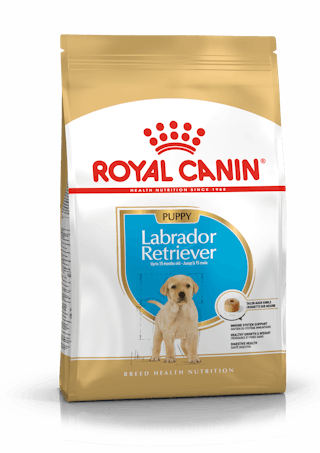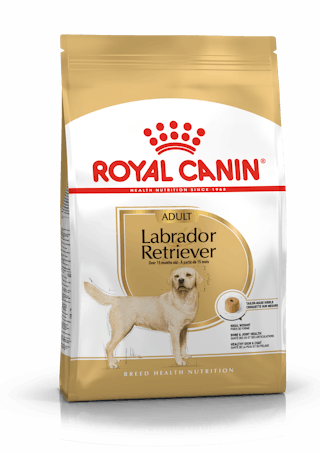
Let's talk Norfolk Terriers
There’s something a bit teddy bear-ish about Norfolk Terriers, with their tufty little faces, big brown eyes and perky ears. These friendly little livewires (they’re among the smallest terriers) fit a whole lot of energy into a small package. Because they’re so dinky, they’re pretty adaptable too, fine for apartment-living and always ready for an adventure with their humans, to whom they are extremely loyal and affectionate.
Official name: Norfolk Terrier
Origins: United Kingdom

| Drooling tendencies |
|
Warm weather? | |
| Grooming needs | |
Cold weather? | |
| Shedding level | |
Suited to apartment living ? | |
| Barking tendencies | |
Can stay alone?* | |
| Physical activity needs | |
Family pet?* | |
| Compatibility with other pets | |
* We advise against leaving pets alone for long stretches. Companionship can prevent emotional distress and destructive behaviour. Speak to your veterinarian for recommendations.
Every pet is different, even within a breed; this snapshot of this breed specifics should be taken as an indication.
For a happy healthy and well-behaved pet, we recommend educating and socializing your pet as well as covering their basic welfare needs (and their social and behavioral needs.
Pets should never be left unsupervised with a child.
Contact your breeder or veterinarian for further advice.
All domestic pets are sociable and prefer company. However, they can be taught to cope with solitude from an early age. Seek the advice of your veterinarian or trainer to help you do this.


| Baby age: | Birth to 2 months |
| Puppy age: | 2 to 10 months |
| Adult age: | 10 months to 8 years |
| Mature age: | 8 to 12 years |
| Senior age: | From 12 years |

1/7
Get to know the Norfolk Terrier
All you need to know about the breed
At just 25cm tall, Norfolk Terriers are among the smallest terrier breeds, with sturdy, compact little bodies, tiny but strong legs and friendly, open expressions. Small dogs, sure—but they have big personalities.
Alert, tenacious and energetic, as befits a terrier breed, Norfolks were bred to work in packs, catching rats, so they have a more gregarious temperament than some of their cousins.
Norfolk Terriers make popular, pint-sized family pets, albeit ones that need regular exercise. A mix of walks and play sessions will burn off some of that terrier energy. Thanks to their rat-catching roots – read prey drive – they need to be exercised on the lead or in an enclosed space and kept away from smaller animals such as hamsters to avoid any … unpleasantness.
Norfolk Terriers make good watchdogs and affectionate companions for a human family. Once trained, they get along well with children. They can have a tendency to bark a little if they get bored, but that barky-ness can work in your favour if you’re looking for a miniature watchdog. Norfolk Terriers have a reputation for being independent-minded but they’re also intelligent so they do respond well to training.
Because of their diminutive size, Norfolk Terriers are perfectly content living in an apartment and they are easily portable—these are loyal and affectionate canines who will accompany their humans on any adventure.

2/7
2 facts about Norfolk Terriers
1. The terrier formerly known as …
The Norfolk Terrier breed has changed its name several times over the years. Previous incarnations include Cantab Terriers (after the Latin name for Cambridge University, where they were kept by students); Trumpington Terriers, after a street in their home region in Norfolk, eastern England and Jones Terriers, after a famous breeder. They have made peace with the new name.
2. The great escape
It’s hardly surprising that Norfolk Terriers love digging—for a breed originally developed to work as rat-catching terriers, burrowing into small holes is in their DNA. But these little dogs really love digging. If you have a garden, make sure the fence is a solid one, with posts sunk deep into the earth to avoid a canine rerun of Steve McQueen’s Great Escape. Motorbike optional.
History of the breed
Frank “Roughrider” Jones might sound like the lead character in a Western, but he was in fact a British dog breeder who in the early part of the 20th century became known for developing the Norfolk Terrier breed and later introducing these funny and charming little dogs to the United States. That explains why the breed was at one point known as the Jones Terrier. This type of short-legged terrier was already being bred in the Norfolk area in the east of England in the 1800s, but Jones was one of the key breeders responsible for bringing them to wider attention.
Initially, Norfolk Terriers, with their folded-over ears, were considered part of the Norwich Terrier breed, whose ears stick up. What a difference an ear makes: That crucial distinction led, after much deliberation among terrier experts, to the separate designation of the Norfolk Terrier breed in the 1960s. Though their exact ancestry remains unclear, Cairn Terriers, Border Terriers and Glen of Imaal Terriers are thought to figure in their make-up. The breed was recognised by the UK Kennel Club in 1964.

4/7
From head to tail
Physical characteristics of Norfolk Terriers
1. Ears
Medium-sized, V-shaped ears folded forward.
2. Head
Broad, slightly rounded head with longer hair on muzzle.
3. Body
Strong but compact body with short legs.
4. Coat
Wiry coat in shades of red, wheaten, tan, black or grizzle.
5. Tail
Medium-length tail tapering to the tip.

5/7
Things to look out for
From specific breed traits to a general health overview, here are some interesting facts about your Norfolk Terrier

6/7
Caring for your Norfolk Terrier
Grooming, training and exercise tips
With their double coats – a hard, wiry outer layer and soft, insulating undercoat – Norfolk Terriers need a certain amount of grooming. Handstripping removes old outer hairs and excess undercoat to allow new hair to grow in, and it helps keep the dogs’ coats looking shiny and beautiful. Don’t be fooled by those little legs, Norfolk Terriers enjoy running and playing and have energy in spades. They really need a good amount of exercise, through walks and games of fetch, to stay physically healthy and mentally stimulated. If you’re going to let them off the lead, it should be in a safely enclosed space without any smaller animals. Their strong prey instinct means they could otherwise shoot off in pursuit of any moving targets. Training is a must for these intelligent little canines. They benefit from early socialisation and puppy training classes. Any food rewards for training should come out of their daily rations to ensure they maintain a healthy weight.
7/7
All about Norfolk Terriers
Terriers often get a bad yap – sorry, rap – for barking. But while Norfolk Terriers can make good watchdogs, barking to let you know if something is out of the ordinary or if they’re left alone too much and are bored. But Norfolk Terriers are intelligent dogs and with training they will be able to learn what they need to bark at and what they can safely ignore.
Norfolk Terriers do not shed much compared with many other breeds, but their double-layer coat does require a fair amount of maintenance to keep it in good condition. The good news is, they’re only little so it shouldn’t take long—and brushing is a great opportunity for a cuddle.
Tailored nutrition for your Labrador Retriever
Autres races susceptibles de vous intéresser
Read More about Breeds

How your dog's nutrition needs change with age

How to adopt a dog

Things to consider before getting a dog
Sources
1 - Veterinary Centers of America https://vcahospitals.com/
2 - Royal Canin Dog Encyclopaedia. Ed 2010 and 2020
3 - Banfield Pet Hospital https://www.banfield.com/
4 - Royal Canin BHN Product Book
5 - American Kennel Club https://www.akc.org/


